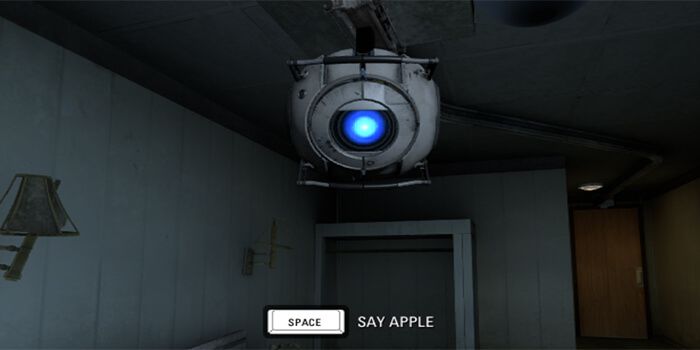Games have a lot of standard elements, but it's the differences between them that make tutorials almost a necessity. While you can know without playing that a shooter game is going to ask you to shoot enemies, control schemes and abilities differ from game to game, making tutorials common in explaining the particulars of individual games.
Unfortunately, not all tutorials are good ones—many spend too long on trivial or standard mechanics like jumping, crouching, or interacting with objects, while other games drop you in with nothing but a picture of a controller and lines designating what each button does, or nothing at all.
Clearly, a happy medium is necessary in video game tutorials, but this isn't so easy to achieve. Here we take a look at some tutorial examples (both good and bad) across genres and popular series.
Complex Games with New Mechanics Require Complex Tutorials
For games with a lot of mechanics or with concepts that are entirely new to players, tutorials are a necessity. While RTS games like Civilization are an absolute blast to play, trying to navigate the complex diplomacy systems, world exploration, and combat mechanics without a helpful guide is nigh impossible. Even to an experienced player, switching from one RTS franchise to another can be confusing; in cases like this, tutorials, active guides (such as Civilization 5's advisors), and pop-up hints can be invaluable. Without them, the menus are confusing and overloaded with information—through practice matches that get the player learning how to use the concepts in practice, RTS tutorials make abstract ideas concrete.
Heavier tutorials are also necessary for games that don't use traditional mechanics. Though Portal kicked off a trend of inspired puzzle games, playing it when it first released would have been incredibly confusing without the game's dedication to walking you through thinking with portals.
In fact, it's easy to think of a good chunk of the game as a tutorial—Aperture's test chambers serve to arm you with the concepts you need to defeat GLaDOS, as explained in the game's commentary track. In many games, killing the boss is a matter of using souped-up weapons and powers against a souped-up enemy, but the final boss in Portal requires the use of techniques you learn over the course of the game—for example, speedy thing goes in, speedy thing comes out and dropping objects into fire kills them.
What works about this is the quality of the writing and the amount of player engagement; while you're still being walked through concepts, the moment when you get to solve a puzzle for yourself is still a moment of victory. Rather than feeling like our hands are being held, we feel like we've been armed with necessary knowledge—a key difference between good game tutorials and bad ones.
Games with Simple Controls Require Minimal Tutorials, But More Practice
But not all games are that complex or require explanation—for a genre as established as fighting games, tutorials don't need to be quite so long or involved as they would in an RTS game or RPG. Rather than requiring players to pass a series of simple challenges to progress, most people can pick up a fighting game and play it immediately.
The difference between games like this and other genres is that fighting games, such as Mortal Kombat X, are easy to pick up but hard to master. While you might dominate your friends in local games, playing online is an entirely different matter—you need hard-earned skill to succeed against seasoned players, not just knowing which button does a strong kick. Instead of holding your hand through the process, Mortal Kombat X and other fighting games, now typically offer a training room to practice your combos uninterrupted.
For games with simple mechanics, such as platformers, an in-depth tutorial usually isn't necessary. Games like this sometimes use signposts or other indicators at the beginning, and leave it up to the player from there—while the challenges may get more difficult, the mechanics remain largely static over the course of the game.
Forget the Tutorials and Embrace the Thrill of Discovery
Some games are content to drop you in without a tutorial at all, and that's not always a bad thing. While there are numerous Wikis and guidebooks out there, Minecraft can be played without them, and the game itself offers little information for what to do with the numerous resources you can collect. This approach to tutorials relies on the thrill of discovery, as simple mechanics, such as combining materials to make new materials, combine to make increasingly complex items that can be used for increasingly complex tasks. It's simple, but effective—rather than showing you how to make an axe, how to chop down a tree, and how to make a crafting table, Minecraft lets you figure it out for yourself and became the best-selling PC game of all time as a result.
How well tutorials work depends on how well they're implemented. A good game can easily have a bad tutorial by relying too heavily on hand-holding when it isn't necessary—games like Kingdom Hearts 2 and Assassins Creed 3 have extensive, exhausting tutorials that are almost entirely unnecessary in sequels. While tutorials do ease newcomers to a series into later entries in a series, they also irritate fans and patronize people who pick the game up for the first time. New players certainly deserve a chance to learn the ropes, but that doesn't mean they should have to suffer through several strange, Sora-less hours in Kingdom Hearts 2 for it.
By blending techniques together—mixing the walkthrough aspect of Portal with the fun of Minecraft's discovery, for instance—developers can create tutorials that don't feel so much like siting through a boring lesson, getting players involved quicker and more efficiently.
What games do you think have the best or worst tutorials?

